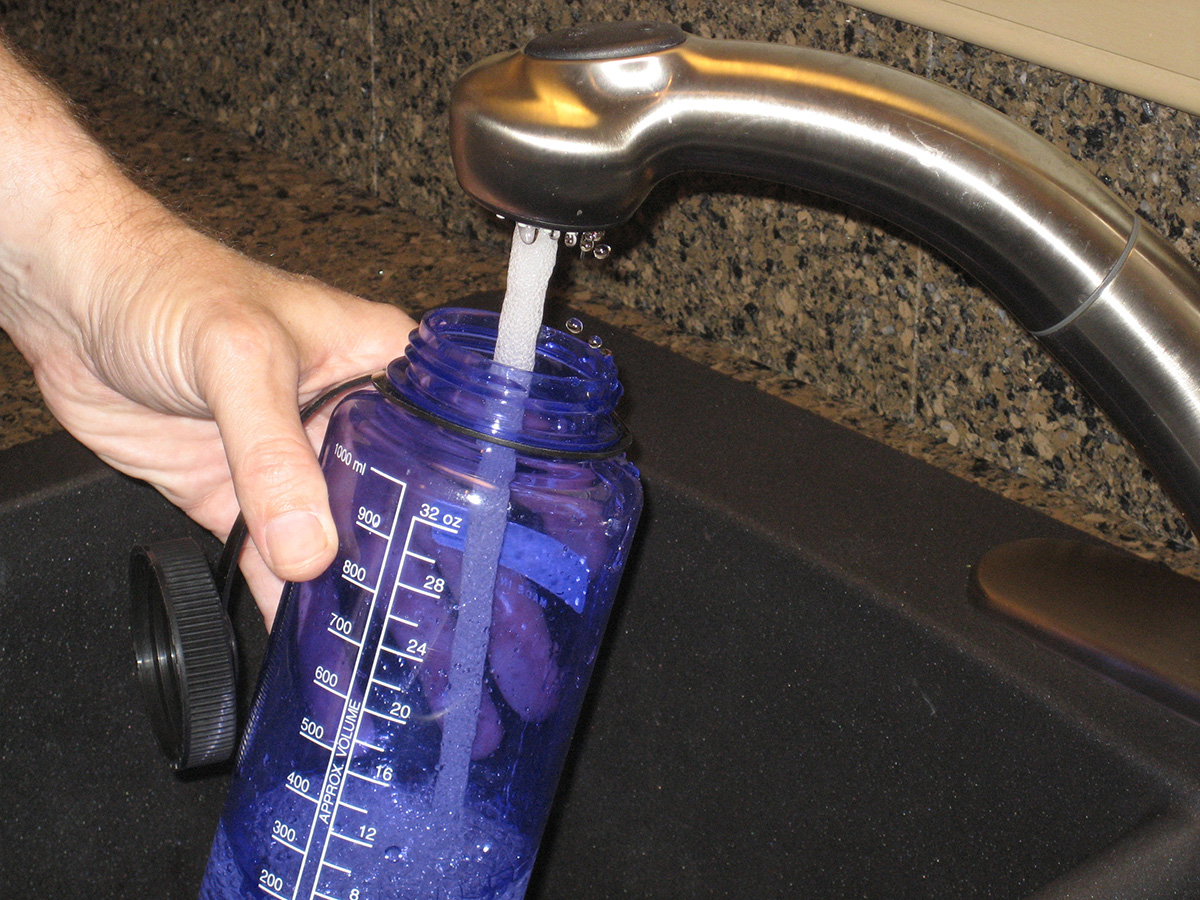
By Becky Schuerman, Extension Domestic Water/Wastewater Associate
Historical and current water quality monitoring shows nitrate is present in groundwater throughout much of Nebraska. It is when results are at or above the 10mg/L Maximum Contaminant Level (MCL) that hazardous health effects become a concern among humans and animals. Nitrate is colorless, odorless and tasteless, and the only way it can be detected in drinking water is through submitting a sample for laboratory testing.
WHERE DOES NITRATE COME FROM AND WHAT IS NITRIFICATION?
Nitrogen is the nutrient applied for lawn and garden care and crop production to increase productivity. Feedlots, animal yards, septic systems and other waste treatment systems are additional sources of nitrogen that is carried in waste. Nitrogen occurs naturally in the soil in organic forms from decaying plant and animal material.
Bacteria in the soil convert various forms of nitrogen to nitrate, a nitrogen/oxygen ion. This process is called nitrification. A good example of nitrification is when bacteria within the soil converts the ammonia from a fertilizer into nitrite and then into nitrate. This is desirable since the majority of the nitrogen used by plants is absorbed in the nitrate form. However, nitrate is highly soluble and readily moves with water through the soil profile. If there is excessive rainfall or over-irrigation, nitrate will move below the plant’s root zone due to soil saturation and may eventually reach groundwater.
HOW WE INGEST NITRATE AND POTENTIAL HEALTH HAZARDS
We ingest nitrates through the vegetables we eat, particularly leafy greens, and potentially through the water we drink. Nitrates in our groundwater going undetected is more of a concern with private drinking water wells, because they are often not tested regularly, whereas public water supplies are on a strict testing schedule.
The acute health hazard associated with nitrate-contaminated drinking water that exceeds the 10mg/L (MCL) occurs when bacteria in the human or animal digestive system transforms nitrate to nitrite. The nitrite reacts with iron in the blood’s hemoglobin, the substance in red blood cells that carries oxygen, to form methemoglobin. This creates the condition known as methemoglobinemia (often referred to as “blue baby syndrome”), in which, due to the nitrites, blood lacks the ability to carry sufficient oxygen to the individual body cells. Infants under one year of age have the highest risk of developing methemoglobinemia. An older person who has a gastrointestinal system disorder resulting in increased bacteria growth may also be at greater risk than the general population. In addition, an individual who has a genetically impaired enzyme system for metabolizing methemoglobin, may be at greater risk as well. The general population has a low risk of developing methemoglobinemia, even when ingesting relatively high levels of nitrate/nitrite. Other health effects from long-term consumption of water containing high nitrate of varying concentrations, continue to be researched.
CONCERNS OF NITRATE IN PRIVATE WELLS
If you have a new private well, initial nitrate and bacteriological tests by an accredited laboratory should be conducted to determine the baseline concentrations. This is particularly important for households with infants, pregnant women, nursing mothers, elderly people or anyone with a compromised immune system. These groups are believed to be the most susceptible to nitrate health effects if they consume drinking water over the 10mg/L MCL. Livestock and pets within the same groups can also be negatively affected by high nitrate concentrations.
Activities at or near a well site can potentially contaminate the water supply, changing the nitrate concentration over time. In order to monitor for changes, it is highly recommended private drinking water wells be tested for nitrates and coliform (bacteria) annually, as well as any other contaminants of concern in your area.
WHAT TO CONSIDER IF NITRATES IN YOUR WATER SOURCE EXCEED 10MG/L MCL
If nitrate-nitrogen exceeds the 10mg/L MCL, you should voluntarily consider an alternative drinking water source or water treatment. Decisions should be based on a nitrate analysis by a reputable laboratory and after consulting with a physician to help evaluate the level of risk. You will need to use bottled water for preparing infant formula and cereal, as well as for drinking and cooking until a more permanent solution is in place. It may be possible to obtain a satisfactory alternate water supply by drilling a new well in a different location or a deeper well in a different aquifer, but there are no guarantees. Many choose drinking water treatment as an alternative. There are three treatment methods that can be implemented to remove or reduce nitrate-nitrogen in drinking water: distillation, reverse osmosis and ion exchange.
Carbon filters and standard water softeners are common among households for drinking water treatment, but they do not remove or reduce nitrate-nitrogen, nor does boiling water on the stove top. In fact, when water is boiled, water is lost through evaporation, but the nitrates remain behind. This results in an increased nitrate-nitrogen concentration in the water that remains after prolonged boiling.
*This article contains some content originally written in 2011 by Sharon Skipton, retired Extension Educator.
FOR MORE INFORMATION
For further information on nitrates, see Nebraska Extension NebGuide “Drinking Water: Nitrate-Nitrogen” (G1784) at https://extensionpublications.unl.edu/assets/pdf/g1784.pdf.
For a current accredited laboratories list or to order your annual nitrate and/or coliform (bacteria) test kit, go to the Nebraska Public Health Environmental Laboratory site at http://dhhs.ne.gov/Pages/Public-Health-Lab.aspx. You can also call the lab at 402-471-3935 to order kits.